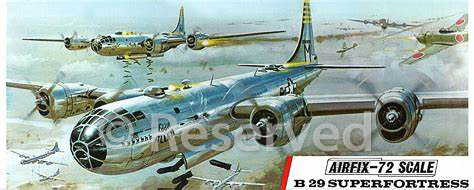The need for more regular work lead dad to look at the range of plastic construction kits marketed in Woolworths and model venues under the brand name ‘Airfix’. Many were of aircraft subjects but the artwork and packaging looked cheap with clear ‘plastic bag’ packaging and line drawings in crude colours which did little to promote what were actually rather good scale models. Dad wrote to the Airfix headquarters in Wandsworth, South London, and enclosed a few colour samples of his work to tell them he could do it a lot better and was invited by their Chief Buyer, Charles Smith, to come up to head office and bring with him with some original samples of his art work.
 The result was dad being asked to submit some rough ideas for a forthcoming kit of the Dornier Do 217 (the famous ‘flying pencil’ German bomber) which he did as several black and white views and a colour ‘rough’. An order resulted for the finished colour art, which proved acceptable when shown to managing director John Gray and eventually further orders followed in increasing numbers which occupied most of his time for the next ten years, coinciding with the heyday of the kit side of the company.
The result was dad being asked to submit some rough ideas for a forthcoming kit of the Dornier Do 217 (the famous ‘flying pencil’ German bomber) which he did as several black and white views and a colour ‘rough’. An order resulted for the finished colour art, which proved acceptable when shown to managing director John Gray and eventually further orders followed in increasing numbers which occupied most of his time for the next ten years, coinciding with the heyday of the kit side of the company.
Dad didn’t just do aircraft, and worked closely with John Edwards, head of the drawing office and chief researcher and initiator of the ever growing range of kits and models. Illustrations for cars, tanks and military vehicles, railway engines and even space rockets left his studio. Perhaps most significant though for his subsequent development as an artist were the commissions for ships.
 Dad was perhaps a little less comfortable with illustrations depicting figures but his Boy Scout kit illustration is creditable enough and we have a chuckle in family circles about the Nottingham Castle playset artwork which depicts the imposing fortress being rather rashly assaulted by a lightly armed Robin Hood and his merry men!
Dad was perhaps a little less comfortable with illustrations depicting figures but his Boy Scout kit illustration is creditable enough and we have a chuckle in family circles about the Nottingham Castle playset artwork which depicts the imposing fortress being rather rashly assaulted by a lightly armed Robin Hood and his merry men!
To add to the reference supplied by the company, dad would often bring home a crude first kit pressing off the production line which one of the lads or himself assembled to help with the draughting out of the illustration outline. Occasionally too models made by hand out of wood and hand painted were brought home which I had great fun playing with but mid-air collisions and crashes were definitely forbidden!
Over the ten years dad must have done some two hundred pieces of finished art for Airfix including box side panels, and several hundred rough ideas in pencil and colour. Sometimes, three pencil sketches were done and a colour rough for a particularly important kit such as the Concorde. By 1973 the production of new kits began to wane and most of the existing range had been repackaged so it was time for dad to embark on a completely new enterprise and enter the world of fine art!
